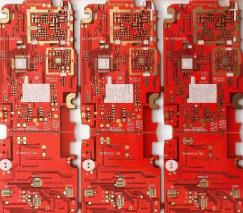Ceramic PCB application laser processing equipment is mainly used for cutting and drilling. Because laser cutting has more technical advantages, it is widely used in the precision cutting industry. Let’s take a look at the advantages of laser cutting technology in PCB applications. Where is it reflected.
Advantages and analysis of laser processing ceramic substrate PCB
Ceramic materials have good high frequency and electrical properties, and have high thermal conductivity, chemical stability and thermal stability. They are ideal packaging materials for the production of large-scale integrated circuits and power electronic modules. Laser processing ceramic substrate PCB is an important application technology in the microelectronics industry. The technology is efficient, fast, accurate, and has high application value.
Advantages of laser processing ceramic substrate PCB:
1. Due to the small laser spot, high energy density, good cutting quality and fast cutting speed;
2. Narrow cutting gap, saving materials;
3. Fine laser processing, smooth cutting surface without burrs;
4. The heat affected zone is small.
Compared with glass fiber board, ceramic substrate PCB is fragile and requires higher process technology. Therefore, laser drilling technology is usually used.

Laser drilling technology has the advantages of high precision, high speed, high efficiency, large-scale and batch drilling, suitable for most hard and soft materials, and no loss of tools. It is in line with the high-density interconnection of printed circuit boards. Requirements for development. The ceramic substrate using the laser drilling process has the advantages of high bonding force between ceramic and metal, no shedding, blistering, etc., achieving the effect of growing together, high surface flatness, roughness of 0.1 ~ 0.3μm, laser drilling aperture The range is 0.15-0.5mm, and it can even be as fine as 0.06mm.
The difference between different light sources (ultraviolet, green, infrared) cutting ceramic substrates
Difference 1:
Infrared fiber laser cutting ceramic substrates uses a wavelength of 1064nm, green light uses a wavelength of 532nm, and ultraviolet uses a wavelength of 355nm.
Infrared fiber laser can achieve higher power, and at the same time the heat-affected zone is also larger;
Green light is slightly better than fiber laser, and the heat-affected zone is smaller;
Ultraviolet laser is a processing mode that destroys molecular bonds of materials and has the smallest heat-affected zone. This is also a slight carbonization in green processing during the cutting of non-metal PCB circuit boards, while ultraviolet lasers can achieve very little or no carbonization. The reason for carbonization.
Difference 2:
In the PCB field, the UV laser cutting machine can take into account the FPC soft board cutting, IC chip cutting and some ultra-thin metal cutting, while the high-power green laser cutting machine can only cut the PCB hard board in the PCB field. Although cutting can also be done on boards and IC chips, the cutting effect is far lower than that of UV lasers.
In terms of processing effect, because the ultraviolet laser cutting machine is a cold light source, the thermal effect is smaller and the effect is more ideal.
The cutting of PCB circuit boards (non-metallic substrates, ceramic substrates) uses galvanometer scanning mode to peel off layer by layer to form cutting. The use of high-power ultraviolet laser cutting machines has become the mainstream market in the PCB field.